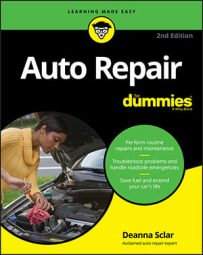The basic difference between a diesel engine and a gasoline engine is that in a diesel engine, the fuel is sprayed into the combustion chambers through fuel injector nozzles just when the air in each chamber has been placed under such great pressure that it’s hot enough to ignite the fuel spontaneously.
Following is a step-by-step view of what happens when you start up a diesel-powered vehicle.-
You turn the key in the ignition.
Then you wait until the engine builds up enough heat in the cylinders for satisfactory starting. (Most vehicles have a little light that says “Wait,” but a sultry computer voice may do the same job on some vehicles.) Turning the key begins a process in which fuel is injected into the cylinders under such high pressure that it heats the air in the cylinders all by itself. The time it takes to warm things up has been dramatically reduced — probably no more than 1.5 seconds in moderate weather.
Diesel fuel is less volatile than gasoline and is easier to start if the combustion chamber is preheated, so manufacturers originally installed little glow plugs that worked off the battery to pre-warm the air in the cylinders when you first started the engine. Better fuel management techniques and higher injection pressures now create enough heat to touch off the fuel without glow plugs, but the plugs are still in there for emissions control: The extra heat they provide helps burn the fuel more efficiently. Some vehicles still have these chambers, others don’t, but the results are still the same.
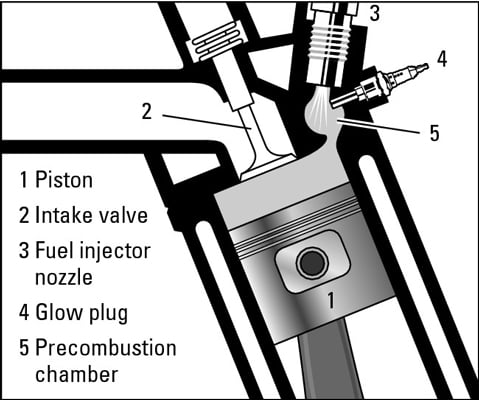 Glow plugs provide extra heat to burn fuel more efficiently.
Glow plugs provide extra heat to burn fuel more efficiently. -
A “Start” light goes on.
When you see it, you step on the accelerator and turn the ignition key to “Start.”
-
Fuel pumps deliver the fuel from the fuel tank to the engine.
On its way, the fuel passes through a couple of fuel filters that clean it before it can get to the fuel injector nozzles. Proper filter maintenance is especially important in diesels because fuel contamination can clog up the tiny holes in the injector nozzles.
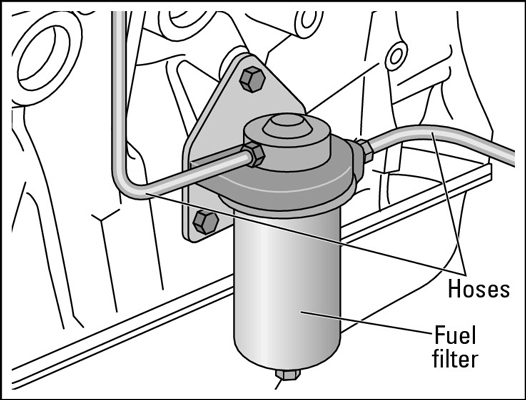 A diesel fuel filter
A diesel fuel filter -
The fuel injection pump pressurizes fuel into a delivery tube.
This delivery tube is called a rail and keeps it there under constant high pressure of 23,500 pounds per square inch (psi) or even higher while it delivers the fuel to each cylinder at the proper time. (Gasoline fuel injection pressure may be just 10 to 50 psi!) The fuel injectors feed the fuel as a fine spray into the combustion chambers of the cylinders through nozzles controlled by the engine’s engine control unit (ECU), which determines the pressure, when the fuel spray occurs, how long it lasts, and other functions.
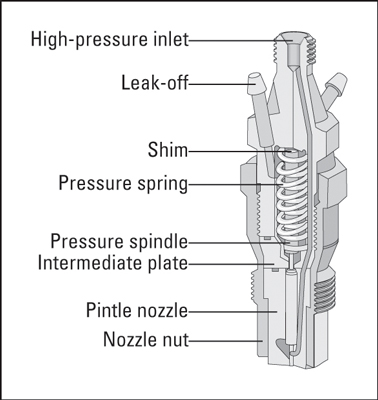 Anatomy of a fuel injector
Anatomy of a fuel injectorOther diesel fuel systems use hydraulics, crystalline wafers, and other methods to control fuel injection, and more are being developed to produce diesel engines that are even more powerful and responsive.
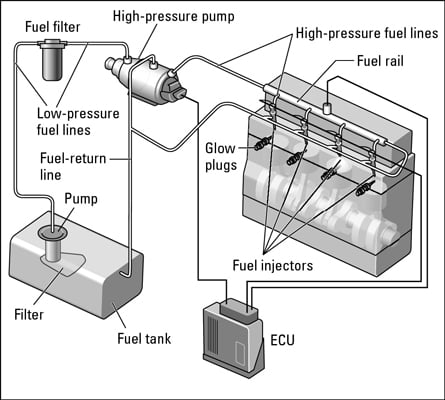 A common rail fuel injection system
A common rail fuel injection system -
The fuel, air, and “fire” meet in the cylinders.
While the preceding steps get the fuel where it needs to go, another process runs simultaneously to get the air where it needs to be for the final, fiery power play.
On conventional diesels, the air comes in through an air cleaner that’s quite similar to those in gas-powered vehicles. However, modern turbochargers can ram greater volumes of air into the cylinders and may provide greater power and fuel economy under optimum conditions. A turbocharger can increase the power on a diesel vehicle by 50 percent while lowering its fuel consumption by 20 to 25 percent.
-
Combustion spreads from the smaller amount of fuel that’s placed under pressure in the precombustion chamber to the fuel and air in the combustion chamber itself.

